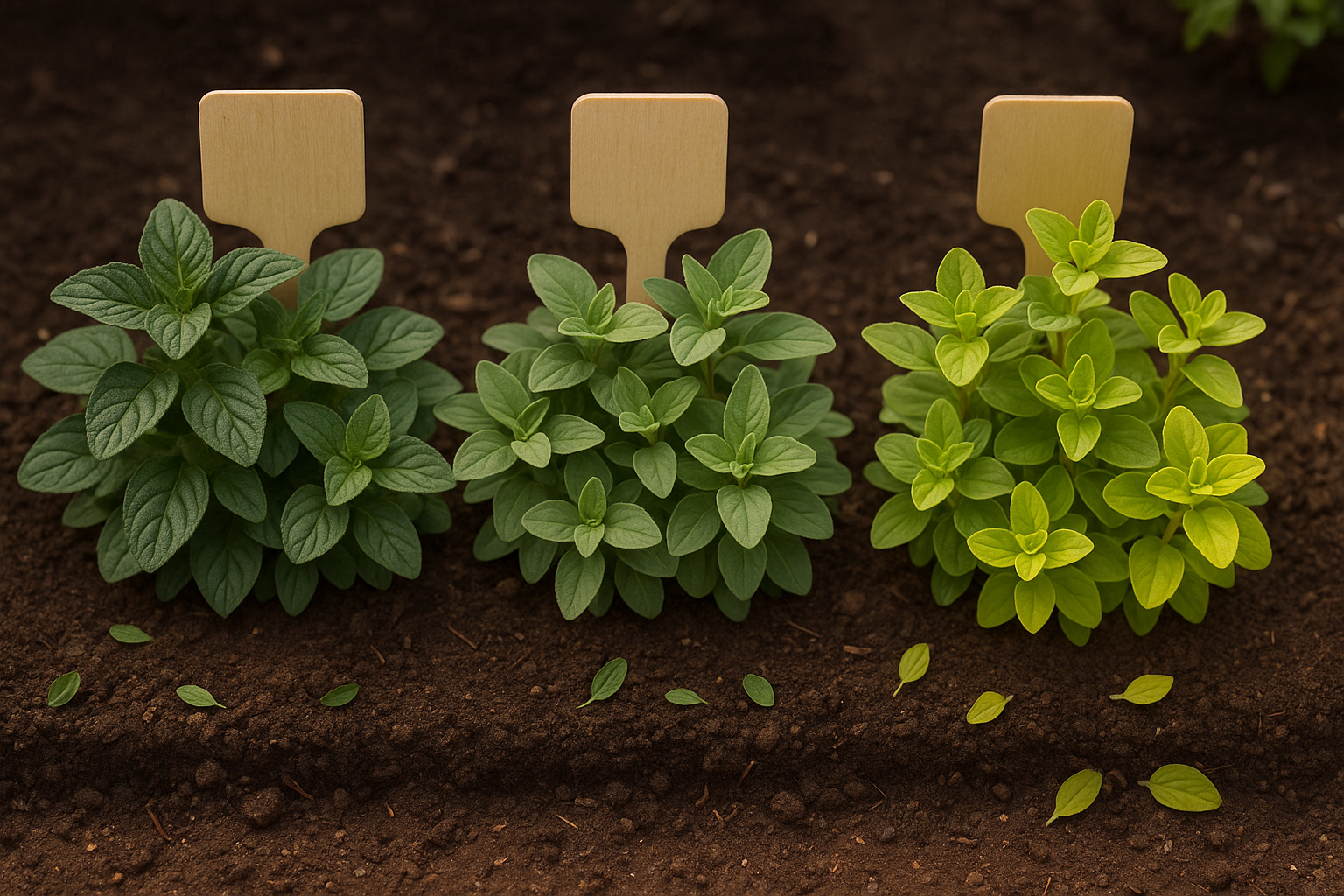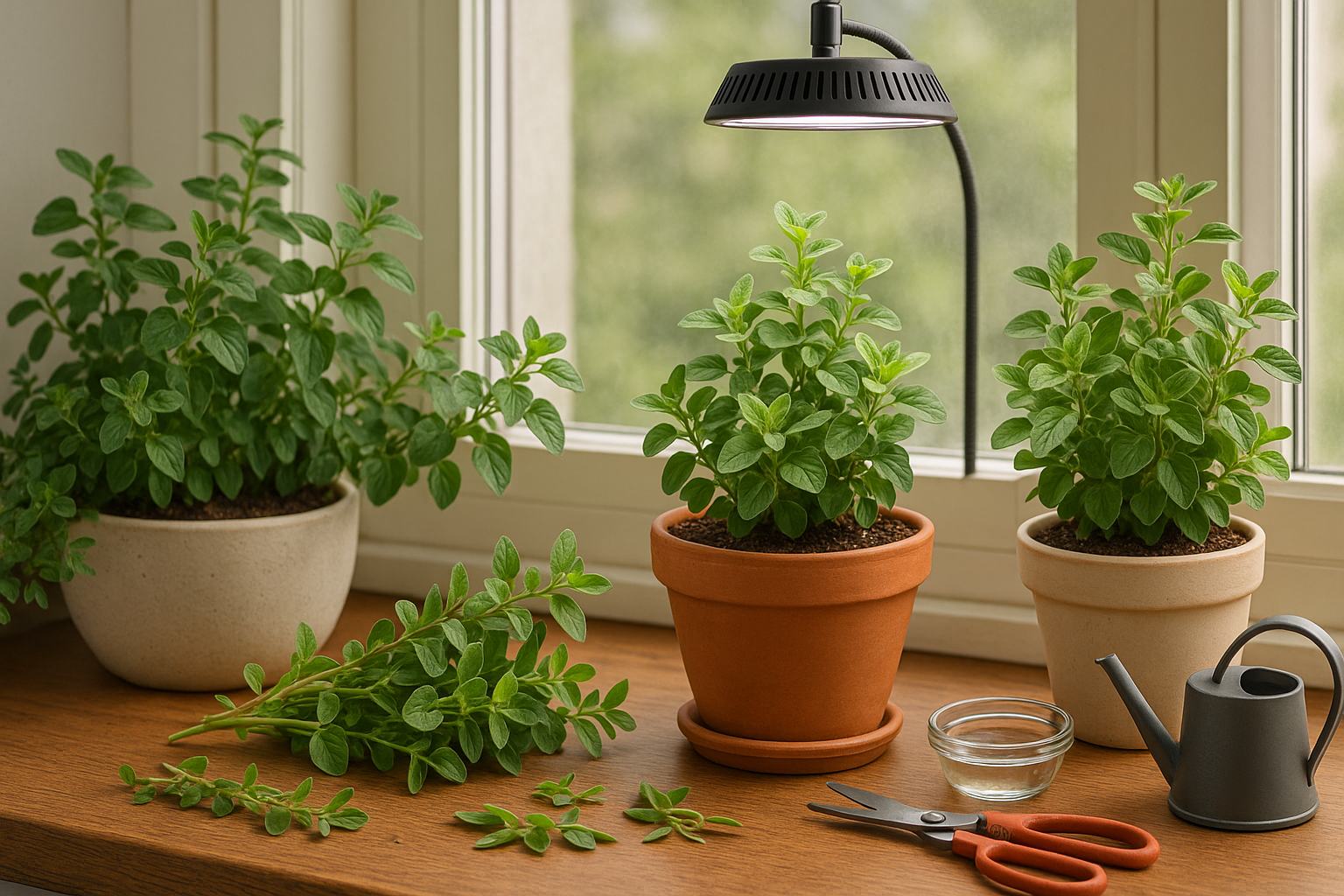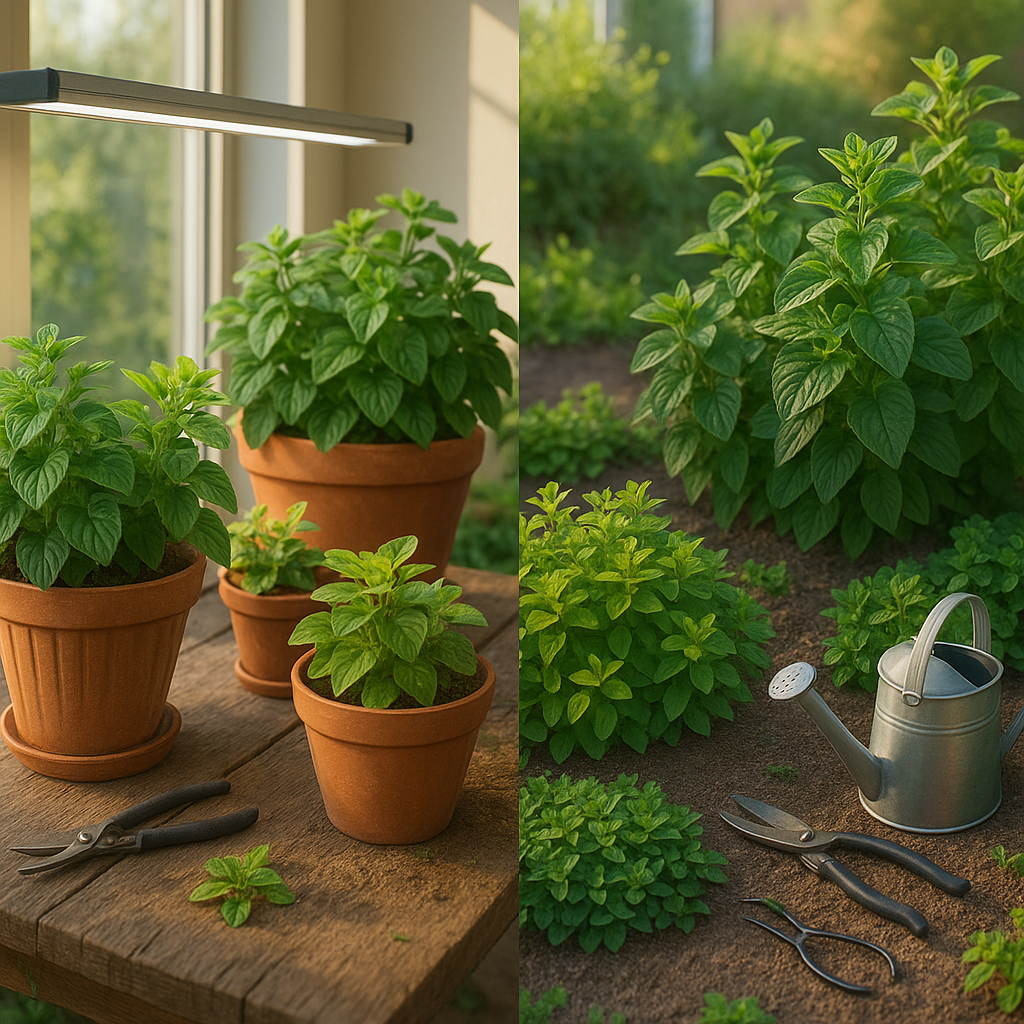Introduction
Year-round oregano growing is a goal for many chefs and gardeners who rely on this fragrant, versatile herb for both flavor and wellness. Oregano, prized for its bold taste and impressive medicinal properties, is a staple in kitchens and home remedy kits around the world. But can oregano really grow all year, providing a constant supply of fresh leaves whether it’s sweltering summer or the dead of winter?
If you’ve ever wondered whether you can snip fresh oregano regardless of the season, you’re not alone. The answer depends on several factors, but the good news is that oregano is tougher and more adaptable than you might think.
The possibility of year-round oregano growing comes down to your local climate, whether you’re planting indoors or outdoors, and how much care you’re willing to give. In warm climates, oregano can thrive outdoors with just a bit of protection. For those in colder regions, growing oregano indoors on a sunny windowsill or under grow lights can keep your plant productive even when frost covers the ground.
Plus, with a few basic tips—like choosing the right container, watering correctly, and trimming the plant to promote bushiness—gardening novices and seasoned pros alike can succeed. Whether you have a garden plot or just a windowsill, year-round oregano is within reach.
Let’s explore what it takes to keep this beloved herb flourishing throughout every season, so you’re never out of fresh, homegrown oregano when you need it most.
Choosing the Right Oregano & Varieties

Selecting the best oregano variety for your home garden begins with understanding your options and what suits your climate and cooking style. Greek oregano (Origanum vulgare hirtum) is a top choice, prized for its robust, classic flavor and hardiness. It’s a perennial in most regions and thrives both in garden beds and containers, making it perfect for frequent culinary use.
Italian oregano, a hybrid of oregano and marjoram, is slightly milder and sweeter—ideal if you enjoy Mediterranean dishes but prefer a less intense taste. For something unique, golden oregano (Origanum vulgare ‘Aureum’) offers striking yellow-green leaves that add brightness to borders and salads, though its flavor is milder and more ornamental than other types.
Perennial vs. Annual Oregano
When comparing perennial and annual oregano types, perennials such as Greek and Italian oregano can survive winter in USDA zones 5 and up with a layer of mulch, providing leaves year after year with minimal maintenance. Annual varieties, on the other hand, complete their life cycle in one season and are better suited for locations with harsh winters where perennials may not survive outdoors.
Selecting and Growing Oregano
For best results, choose healthy young plants or seeds from a reputable nursery or supplier. Look for plants with strong stems and no signs of wilting, pests, or disease. If starting from seeds, check the recommended sowing times for your region—oregano seeds need warmth and light to germinate, so starting them indoors in early spring often works best.
Finally, match your oregano variety to your growing conditions: Greek oregano prefers full sun and well-draining soil, while golden oregano can tolerate more shade. In humid climates, provide plenty of airflow to reduce fungal issues. With the right selection and care, oregano can be one of the easiest and most rewarding herbs to grow at home.
Ideal Conditions for Year-Round Growth
Achieving year-round growth for your plants starts with mastering a few fundamental conditions. First, ensure they get the right sunlight; most edible and ornamental plants thrive with six to eight hours of direct sunlight daily. Place them accordingly, whether you’re growing indoors or outdoors.
Indoors, use south-facing windows or supplemental grow lights to control light and extend daylight hours during winter. Outdoor plants depend more on the local climate, so consider planting in the sunniest spots or rotating pots to maximize exposure.
Next, soil quality is crucial—use a nutrient-rich, well-draining soil blend to promote strong roots and reduce the risk of disease. Regularly amend outdoor beds with compost for long-lasting fertility.
Temperature also plays a major role: most common garden plants do best between 60-75°F (15-24°C). Indoors, you can maintain these conditions consistently, but outside, it’s smart to use mulch in summer or row covers and cloches in spring and fall to buffer temperature swings.
Watering needs change with the season and whether you’re growing in containers or open ground. Always check soil moisture with your finger—if the top inch feels dry, it’s time to water. Avoid soggy roots by ensuring proper drainage.
If you garden in a region with cold winters, overwintering is essential. Hardy perennials benefit from a thick blanket of mulch to insulate their roots, while more delicate annuals might need to be potted up and moved indoors before the first frost.
Consider creating a cold frame or using frost cloths for protection; even a simple DIY plastic tunnel can keep tender plants going through chilly nights. By tailoring these key factors to your specific setup and climate, you’ll give your plants the best shot at thriving all year long.
Growing Oregano Indoors and in Containers

Growing oregano indoors in containers is a convenient way to keep fresh herbs at your fingertips year-round. With a little planning, you can ensure happy, healthy plants.
Start with a pot that’s at least 8 inches wide, filled with well-draining potting mix—look for one labeled for herbs or vegetables. Plant oregano seeds or purchase a young plant, nestling it just deep enough to cover the roots.
Position your container near a south- or east-facing window where your oregano can soak up at least 6 hours of bright sunlight daily. If your home doesn’t offer strong sun, supplement with a full-spectrum LED grow light placed a few inches above the plant. Run the grow light for 14-16 hours each day to mimic natural daylight and prevent the plant from getting leggy or going dormant over the winter.
Oregano prefers soil that stays lightly moist but never soggy, so water when the top inch of soil is dry—stick your finger in to check. Avoid leaving the pot in standing water, as oregano hates wet feet; ensure your container has good drainage holes.
To prevent winter dormancy, keep indoor temperatures between 65-75°F and avoid drafts. Every couple of weeks, pinch back the tips and harvest leaves regularly to encourage bushy growth—just don’t take more than one-third of the plant at a time.
Fertilizing isn’t strictly necessary, but a diluted liquid herb fertilizer once a month in spring and summer can boost vigor. Rotate the pot every week to keep growth even and prevent the plant from leaning toward the light.
With thoughtful placement, attentive watering, and consistent lighting, your indoor oregano will thrive no matter the season—a flavorful addition to your kitchen windowsill or countertop.
Ongoing Care
Pruning is essential to keep oregano plants bushy, healthy, and productive year-round. Regularly pinch back the growing tips once the plant reaches about four inches tall—this encourages lateral branches to form, preventing legginess and promoting a fuller shape.
Every few weeks during the growing season, trim back up to one-third of the plant, always cutting just above a pair of leaves to stimulate new growth. Avoid letting flower buds form, as flowering can reduce leaf quality and slow production; simply snip off any buds as soon as you spot them.
When it comes to feeding, oregano doesn’t need much fertilizer, but a light application of balanced liquid fertilizer or compost tea every six to eight weeks during active growth will keep plants vigorous without diluting their flavor—over-fertilized oregano can become bland. In poor soils, mix slow-release organic fertilizer into the soil at the start of the season.
For ongoing harvests, start picking oregano leaves once the plant is at least six inches tall. Harvest in the morning after the dew has dried but before the heat of the day for the best flavor. Always take only about one-third of the plant’s foliage at a time, using sharp scissors or pruners, and focus on the outer stems so the center can keep producing.
Consistent, light harvesting not only gives you fresh oregano for the kitchen but also signals the plant to keep putting out new leafy growth, ensuring you have a steady supply all season long. With these easy routines, you’ll enjoy a lush, aromatic oregano bush that offers fresh leaves whenever you need them.
Common Challenges and How to Overcome Them
Growing oregano year-round can be hugely rewarding, but it comes with a few challenges—especially for indoor gardeners or those in tricky climates. Pests like aphids and spider mites are a frequent nuisance, often first noticed as discolored, curling leaves or sticky residue. Combat them naturally with a gentle spray of soapy water or by introducing ladybugs if growing outdoors.
Diseases like powdery mildew appear as white, powdery patches, especially in damp conditions; improve ventilation, avoid overhead watering, and remove affected leaves to prevent spreading.
Legginess, or stretched, floppy stems, usually signals that your plant isn’t getting enough light—move oregano closer to a bright, south-facing window or invest in a simple grow light for winter months.
Slow growth is another tell-tale sign, and it often comes down to overwatering or poor soil; oregano thrives in well-draining pots and only needs watering when the top inch of soil feels dry.
During winter, watch for yellowing leaves or stunted shoots—these can indicate a lack of sunlight or roots struggling against cold drafts.
Proactive care, like rotating your plant for even sun exposure, pruning regularly to encourage bushiness, and keeping indoor temperatures steady, will help your oregano flourish regardless of the season.
Regularly checking leaves and soil not only catches problems early but also deepens your connection with your plants, making year-round oregano a true culinary companion.
Conclusion
Growing oregano year-round is totally doable with a little planning and care. Start by planting it in well-drained soil and pick a sunny spot—outdoors during summer or on a sunny windowsill indoors when it’s cooler. Regularly trimming your oregano encourages bushier growth, and harvesting the leaves before the plant flowers gives you the best flavor.
If you have a big harvest, drying oregano is super easy—just hang small bunches upside down in a dry, well-ventilated area, then store the crumbled leaves for later. Whether fresh or dried, oregano is a versatile herb that brightens up pizza, pasta sauces, grilled veggies, salad dressings, and homemade breads.
Get creative! Try stirring chopped oregano into scrambled eggs or infusing olive oil for a fragrant dip. Feeling adventurous? Swap oregano for basil or thyme in your favorite recipes to discover new flavor twists. Most importantly, connect with other herb lovers in your area or online to swap tips, cuttings, and recipes.
Oregano growing can be a year-round source of fresh flavor and gardening joy, so don’t hesitate to experiment and share your successes with your gardening community.
